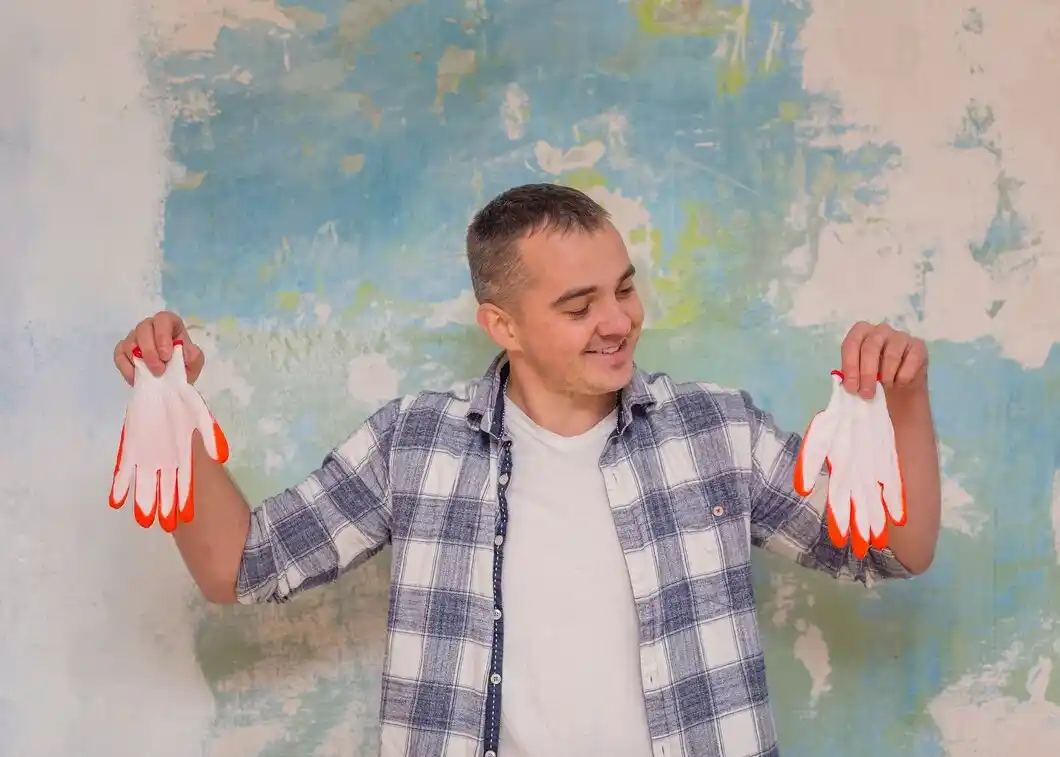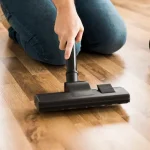When you’re redecorating your home, removing old wallpaper or hanging new wallpaper can be a fun and transformative experience. But what happens when you’re left with excess wallpaper paste? Disposing of wallpaper paste properly is more important than you might think. Improper disposal can lead to plumbing issues, environmental damage, and even fines if local regulations are not followed. This article will walk you through the steps to dispose of wallpaper paste safely and responsibly.
Table of Contents
ToggleUnderstanding Wallpaper Paste
Wallpaper paste, also known as adhesive, is a sticky substance used to hang wallpaper on walls. It’s made from a variety of materials, including starch, cellulose, and synthetic polymers. While some types of wallpaper paste are more environmentally friendly, others contain chemicals that can be harmful if not disposed of properly.
Why Proper Disposal Matters
Improper disposal of wallpaper paste can lead to several problems:
- Environmental Impact: Many wallpaper pastes contain chemicals that can harm the environment if they enter the water supply or are absorbed into the soil.
- Plumbing Issues: Pouring wallpaper paste down the drain can cause clogs in your plumbing system. The paste can solidify, leading to blockages that require professional intervention.
- Regulatory Compliance: Local waste management regulations may have specific guidelines for disposing of materials like wallpaper paste. Failing to comply can result in fines or other penalties.
As a home improvement expert put it, “Properly disposing of wallpaper paste is essential to avoid plumbing issues and environmental concerns.”
Step-by-Step Guide to Disposing of Wallpaper Paste
1. Read the Label
Before disposing of any wallpaper paste, start by reading the label on the container. The manufacturer often provides specific disposal instructions that comply with local regulations. If the label does not provide guidance, the following steps will help ensure you dispose of the paste responsibly.
2. Allow the Paste to Dry
One of the safest ways to dispose of wallpaper paste is to let it dry completely. This method is particularly useful for small amounts of leftover paste. Here’s how to do it:
- Spread It Thinly: Pour the paste onto a disposable surface, like a piece of cardboard or a plastic sheet. Spread it out thinly to allow it to dry faster.
- Wait for It to Harden: Depending on the type of paste, this can take a few hours to a couple of days. Once it’s fully dry, it will be hard and less sticky.
- Dispose of It as Solid Waste: Once the paste is dry, you can dispose of it with your regular household trash. Most waste management services will accept dried paste as part of your regular garbage pickup.
A DIY enthusiast recommends this method, stating, “Allowing the paste to dry completely before disposal is the safest and most effective method.”
3. Do Not Pour It Down the Drain
Pouring wallpaper paste down the drain might seem like a quick fix, but it can lead to serious plumbing issues. The paste can solidify in your pipes, causing blockages that require professional plumbing services to fix.
A plumbing contractor advises, “Avoid pouring wallpaper paste down the drain, as it can cause clogs and damage to your plumbing system.”
Instead, follow the drying method mentioned above or consider other disposal options.
4. Use Absorbent Materials
If you have a larger amount of wallpaper paste to dispose of, you can use absorbent materials like sawdust, cat litter, or sand to solidify the paste before disposal. Here’s how:
- Mix in the Absorbent Material: Add the absorbent material to the paste and stir until it reaches a thick, dough-like consistency.
- Allow It to Dry: Let the mixture sit until it is completely dry and hardened.
- Dispose of It Properly: Once the paste is dry, dispose of it with your regular household waste.
This method ensures that the paste is no longer in liquid form, reducing the risk of spills or environmental contamination.
5. Consider Eco-Friendly Alternatives
If you’re concerned about the environmental impact of wallpaper paste, consider using eco-friendly alternatives. Some modern wallpaper pastes are made from natural, biodegradable ingredients that are less harmful to the environment. When using these products, the disposal process may be simpler, and the environmental impact is reduced.
An environmentalist suggests, “Be mindful of the environmental impact of wallpaper paste. Consider using eco-friendly alternatives or disposing of it responsibly.”
6. Check Local Regulations
Disposal regulations can vary depending on where you live. It’s a good idea to check with your local waste management facility to determine the proper disposal method for wallpaper paste in your area. Some facilities may accept liquid waste, while others may require you to dry it first.
A waste management professional advises, “Check with your local waste management facility to determine the proper disposal method for wallpaper paste in your area.”
By following local guidelines, you ensure that you are disposing of the paste most responsibly and legally possible.
7. Use Commercial Disposal Services
For those who have large amounts of wallpaper paste or prefer not to handle the disposal themselves, commercial disposal services are available. These services are equipped to deal with various types of waste, including hazardous materials.
- Contact a Professional Service: Look for waste management companies in your area that offer disposal services for home improvement materials.
- Schedule a Pickup: Some companies will come to your home to collect the waste, while others may require you to drop it off at a designated location.
- Ensure Compliance: Make sure the service you choose complies with local and federal regulations for waste disposal.
This option is particularly useful for contractors or those undertaking large-scale renovation projects.
Lessons from the Past
When I first started doing DIY home projects, I didn’t think much about how to dispose of materials like wallpaper paste. After one particularly messy wallpaper removal, I naively poured the leftover paste down the drain. Within a few days, my sink was clogged, and I had to call a plumber. That costly mistake taught me the importance of proper disposal methods. Now, I always let the paste dry out or use absorbent materials before throwing it away.
Another time, I used an eco-friendly wallpaper paste for a small project in my bedroom. The cleanup was much easier, and I felt better knowing that the product I was using had a lower environmental impact. It’s these little changes that can make a big difference.
Additional Tips for Handling Wallpaper Paste
- Store Leftover Paste: If you anticipate needing the paste for touch-ups or future projects, consider storing it in an airtight container. Be sure to label it with the date and type of paste so you can use it later.
- Clean Tools Promptly: After using wallpaper paste, clean your tools immediately to prevent the paste from hardening. This makes cleanup easier and prolongs the life of your tools.
- Prevent Spills: When working with wallpaper paste, take precautions to prevent spills. Use drop cloths, wear old clothes, and keep a damp cloth nearby to wipe up any spills immediately.
Conclusion: Responsible Disposal is Key
Proper disposal of wallpaper paste is essential for protecting your plumbing, and the environment, and complying with local regulations. Whether you choose to let the paste dry, use absorbent materials, or hire a professional disposal service, taking the time to dispose of wallpaper paste correctly is well worth the effort. By following these steps, you can complete your home improvement projects with peace of mind, knowing you’ve done your part to minimize your environmental footprint.
In the words of a home cleaning expert, “Cleaning up spills promptly and preventing paste from drying on surfaces can make disposal easier.” Taking these precautions will help ensure that your wallpapering project goes off without a hitch, from start to finish.
By using these guidelines, you’ll be able to dispose of wallpaper paste responsibly, keeping your home and the environment safe from potential harm.
Share via:
Related posts:
 Safe and Stylish DVD Storage Solutions for Families
Safe and Stylish DVD Storage Solutions for Families
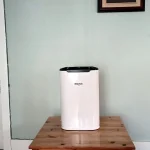 Okaysou Air Purifier: Breathe Easy, Live Better
Okaysou Air Purifier: Breathe Easy, Live Better
 Okaysou Air Purifier Filter Reset: A Comprehensive Guide
Okaysou Air Purifier Filter Reset: A Comprehensive Guide
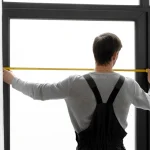 DIY or Hire a Pro: Window Installation Guide
DIY or Hire a Pro: Window Installation Guide
 How Much Is a Generac Generator?
How Much Is a Generac Generator?
 Showpiece Safety: Protecting Your Treasures from Damage
Showpiece Safety: Protecting Your Treasures from Damage
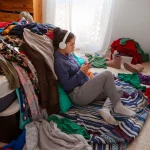 Closet Clutter Crisis: Decluttering and Organizing Tips
Closet Clutter Crisis: Decluttering and Organizing Tips

